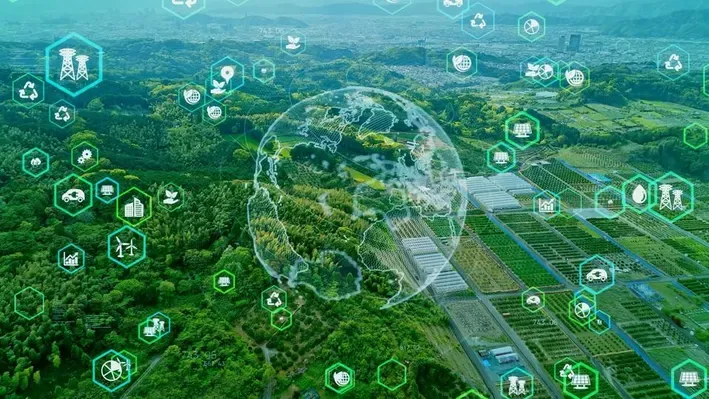

Artificial intelligence is rapidly transforming industries and offering innovative solutions to global challenges. Let’s learn more about this topic below with 2048 Unblocked. As we explore the potential of AI to address climate change, we’ll examine its applications across various sectors and consider both the promises and limitations of this powerful technology.
Artificial intelligence has emerged as a powerful tool in the fight against climate change, offering innovative approaches to reduce greenhouse gas emissions and promote sustainable practices. AI’s ability to process vast amounts of data and identify patterns makes it uniquely suited to tackle the complex, multifaceted challenges posed by global warming.
One of the key areas where AI is making a significant impact is in energy management and optimization. Smart grids powered by AI algorithms can efficiently distribute electricity, reducing waste and maximizing the use of renewable energy sources. These systems can predict energy demand, balance supply and demand in real-time, and integrate intermittent renewable sources like solar and wind power more effectively into the grid.
AI is also revolutionizing the field of climate modeling and prediction. By analyzing historical climate data and current atmospheric conditions, AI-powered models can generate more accurate forecasts of future climate trends. This enhanced predictive capability allows policymakers and scientists to make more informed decisions about climate change mitigation strategies and helps communities better prepare for extreme weather events.
In the transportation sector, AI is driving the development of autonomous vehicles and optimizing traffic flow in cities. These innovations have the potential to significantly reduce carbon emissions by improving fuel efficiency and reducing congestion. AI-powered route optimization algorithms can help logistics companies plan more efficient delivery routes, further cutting down on transportation-related emissions.
Read more: What Is Quantum Computing and Why It Matters
Artificial intelligence is proving to be an invaluable asset in environmental monitoring and conservation efforts. AI-powered systems can analyze satellite imagery and sensor data to track deforestation, monitor wildlife populations, and detect illegal fishing activities. This real-time monitoring capability allows conservationists and law enforcement agencies to respond quickly to environmental threats and protect vulnerable ecosystems.
In the field of agriculture, AI is helping farmers adopt more sustainable practices while increasing crop yields. Precision agriculture techniques, powered by AI algorithms, can optimize irrigation, reduce pesticide use, and improve soil management. These practices not only reduce the environmental impact of farming but also help increase food production to meet the needs of a growing global population.
AI is also playing a crucial role in waste management and recycling. Advanced machine learning algorithms can improve the efficiency of recycling facilities by accurately sorting different types of materials. This technology can help reduce the amount of waste sent to landfills and promote a more circular economy.
While AI holds great promise in addressing climate change, it’s important to acknowledge the challenges and limitations associated with its implementation. One significant concern is the energy consumption of AI systems themselves. Large-scale AI models and data centers require substantial amounts of electricity, which could potentially contribute to carbon emissions if not powered by renewable energy sources.
Another challenge is the need for high-quality, comprehensive data to train AI models effectively. In many cases, especially in developing countries, there may be gaps in climate-related data that could limit the accuracy and effectiveness of AI-powered solutions.
There are also ethical considerations surrounding the use of AI in climate change mitigation. Issues of data privacy, algorithmic bias, and the potential for AI to exacerbate existing inequalities must be carefully addressed as these technologies are developed and deployed.
Looking ahead, the role of AI in addressing climate change is likely to expand and evolve. As AI technologies continue to advance, we can expect to see more sophisticated and effective solutions emerge across various sectors.
One promising area of development is the use of AI in materials science to discover new, more sustainable materials. AI algorithms can rapidly screen and test potential materials for applications such as carbon capture, energy storage, and alternative fuels. This could lead to breakthroughs in clean energy technologies and help accelerate the transition away from fossil fuels.
AI is also expected to play a growing role in climate policy and decision-making. By analyzing complex datasets and simulating different policy scenarios, AI can help policymakers understand the potential impacts of various climate interventions and make more informed choices.
The convergence of AI with other emerging technologies such as the Internet of Things (IoT), blockchain, and quantum computing holds immense potential for addressing climate change. For example, the combination of AI and IoT can enable more efficient energy management in smart cities, while blockchain technology could enhance the transparency and accountability of carbon trading systems.
As these technologies continue to evolve and integrate, we can expect to see increasingly sophisticated and holistic approaches to climate change mitigation. However, it’s crucial to ensure that these technological solutions are developed and implemented in a way that is inclusive, ethical, and aligned with broader sustainability goals.
Read more: Using AI for Personal Productivity and Daily Planning
Artificial intelligence undoubtedly has a significant role to play in addressing the urgent challenge of climate change. From improving energy efficiency and optimizing resource use to enhancing climate modeling and supporting conservation efforts, AI offers a wide range of powerful tools and solutions.
However, it’s important to recognize that AI is not a silver bullet for solving the climate crisis. Effective climate action will require a combination of technological innovation, policy changes, and shifts in human behavior and consumption patterns. AI should be viewed as a valuable tool in this broader effort, rather than a standalone solution.
As we continue to develop and deploy AI technologies for climate change mitigation, it’s crucial to do so responsibly and ethically. This means addressing concerns about energy consumption, data privacy, and potential biases, as well as ensuring that the benefits of these technologies are equitably distributed across society.
Ultimately, the successful application of AI in addressing climate change will depend on collaboration between technologists, policymakers, scientists, and communities. By working together and leveraging the power of AI alongside other solutions, we can hope to make meaningful progress in tackling one of the most pressing challenges of our time.
The journey towards a sustainable future is complex and multifaceted, but with the thoughtful and responsible application of AI, we have a powerful ally in this crucial endeavor. As we continue to innovate and explore new possibilities, the potential for AI to contribute to climate change solutions remains both exciting and essential for the well-being of our planet and future generations.